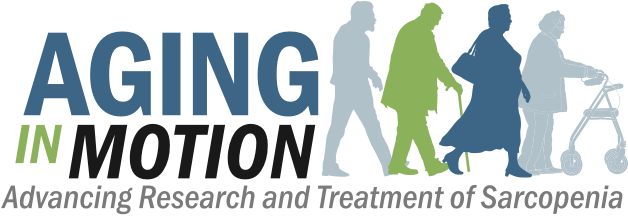This short film is also available in Spanish, Portuguese, and in 30-second and 60-second PSA versions.
Additionally, we have a downloadable sarcopenia fact sheet.
What is Sarcopenia?
Starting as early as age 30, we all begin to lose muscle mass and strength gradually. However, some of us lose it more quickly due to a serious condition called sarcopenia, which becomes more common with age.
Sarcopenia is a serious condition that can significantly impact a person’s quality of life by:
- Reducing the ability to perform simple tasks of daily living like walking up stairs or getting out of a chair
- Increasing disability which may lead to loss of independence and the need for long-term care
Sarcopenia can lead to other health problems/complications such as:
- Raising the risk of falls and fractures
- Increasing the need for and the length of hospitalizations
- Increasing complications post-surgery
- Raising the risk of death
Even though sarcopenia is common (10 – 20% of older adults are estimated to have sarcopenia), many individuals do not get diagnosed or treated for the condition.
Symptoms of sarcopenia can include:
- Falling
- Muscle Weakness
- Slow Walking Speed
- Self-Reported Muscle Wasting
- Difficulty Performing Normal Daily Activities
If you or a loved one is experiencing these symptoms, talk to your healthcare professional. You can also learn more about your risk of sarcopenia by taking the SARC-F. This is a short questionnaire that you can take on your own that will help when talking with your healthcare professional about your risk for sarcopenia.
Cost of Sarcopenia
Sarcopenia can be an expensive disease with the:
- Direct healthcare costs of sarcopenia in the U.S. per year at more than $18 billion
- Average increase to a sarcopenia patient’s healthcare costs per year at more than $2,300
Treating Sarcopenia
Behavior changes are the primary treatments for sarcopenia.
- Physical activity focused on progressive resistance-based strength training can improve strength and physical performance and increase muscle mass.
- A healthy diet, including proteins, can also help when paired with exercise.
Unfortunately, there are currently no medications for sarcopenia, and behavioral interventions are not adequate for many diagnosed with sarcopenia.
Advancing Awareness and Research
In 2016, the Aging in Motion Coalition worked with the Centers for Disease Control and Prevention (CDC) to create an ICD-10 code (M62.84) for sarcopenia, which had the following effects:
- Made sarcopenia a reportable disease by medical professionals
- Increased the diagnosis and treatment of sarcopenia by allowing medical professionals to get reimbursed for their screening time
- Provided a way to collect data on sarcopenia
Though research points to the need for medications and other prescribed treatments, little can be done until policymakers and the medical community overcome significant barriers. AIM works to address these challenges. For more information about the goals of AIM, go to About AIM – Aging in Motion.
Sarcopenia Facts and Figures
If you would like to learn more about sarcopenia and its human and economic impact, you can view AIM’s Facts and Figures document by clicking the link above. The document provides a curated list of peer-reviewed facts and figures to help physicians, patients, and caregivers better understand sarcopenia.
